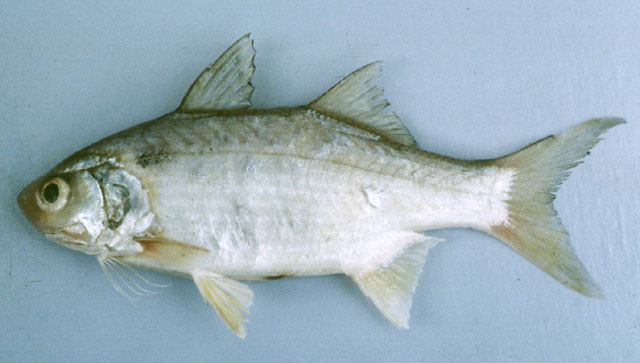| Polynemidae (Threadfins) |
| 25 cm TL (male/unsexed) |
|
demersal; brackish; marine; depth range 2 - 55 m |
| Eastern Indian Ocean and Western Pacific: Tamil Nudu, India to Myanmar and Phuket, Thailand; then from Taiwan to Indonesia and New Caledonia. |
|
Dorsal spines (total): 9-9; Dorsal soft rays (total): 12-14; Anal spines: 3-3; Anal soft rays: 11-12; Vertebrae: 10-14. With 5 pectoral filaments; uppermost not reaching to (or extending slightly beyond) posterior tip of pectoral fin. Pectoral fin, rays short, 17-20% of SL; all rays branched except uppermost 1 or 2. Second dorsal spine long, 7-9% of SL. Well-developed swim bladder. A large black spot anteriorly on lateral line (Ref. 40958). Posterior margin of maxilla reaching to (or slightly short of) level of posterior margin of adipose eyelid. Lower tip of 7th proximal pterygiophore of 1st dorsal fin directed backwards. Lateral line squamation on caudal fin unbranched, extending to upper end of lower caudal fin lobe (Ref. 40970). |
| Found in turbid coastal waters, estuaries and mangrove creeks, and in mangrove-lined rivers (Ref. 57343). Euryhaline (Ref. 12743). Feeds mainly on small crustaceans (especially shrimps), fishes and benthic organisms (Ref. 3479). |
|
Least Concern (LC); Date assessed: 04 February 2009 Ref. (130435)
|
| harmless |
Source and more info: www.fishbase.org. For personal, classroom, and other internal use only. Not for publication.

